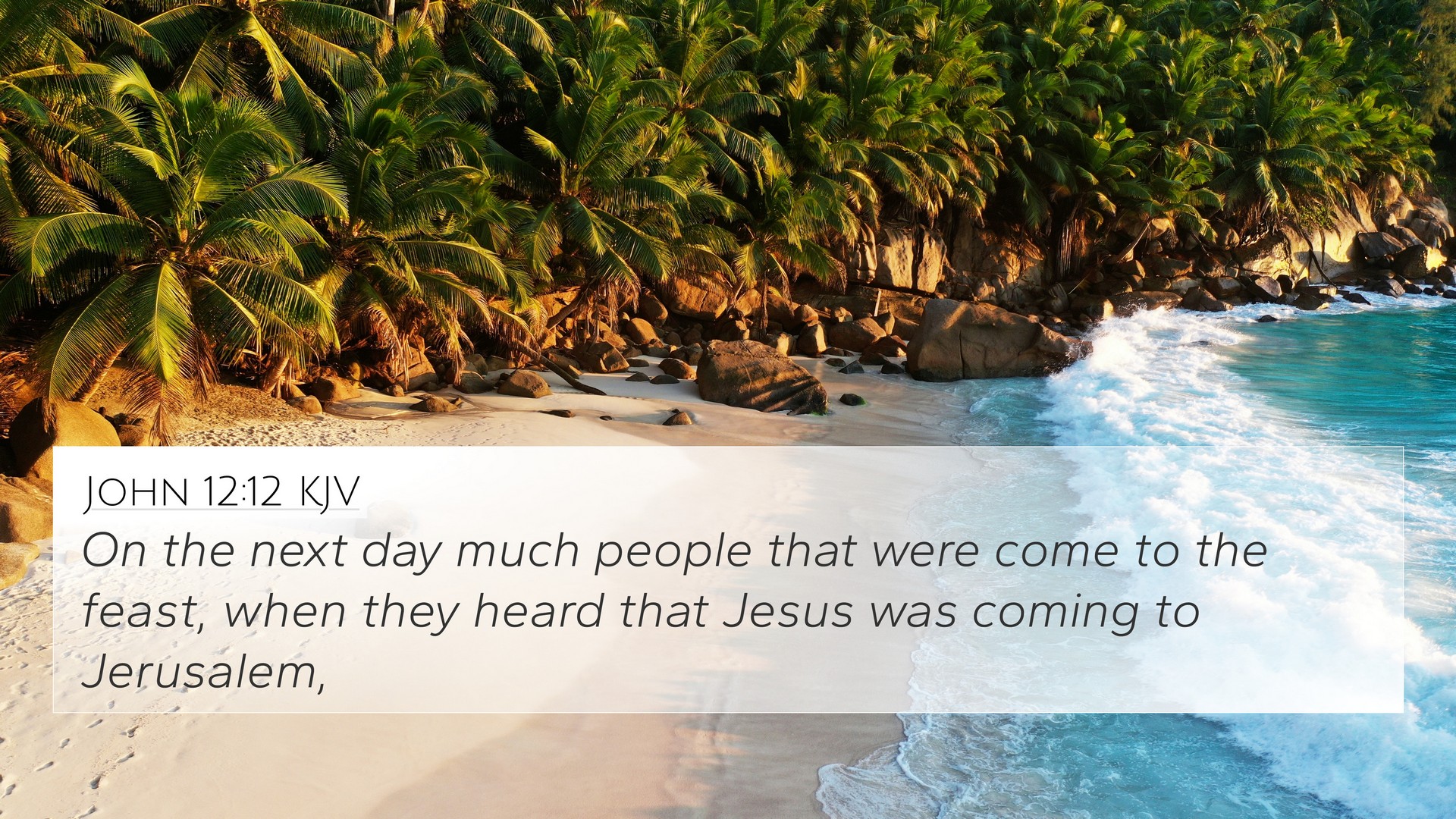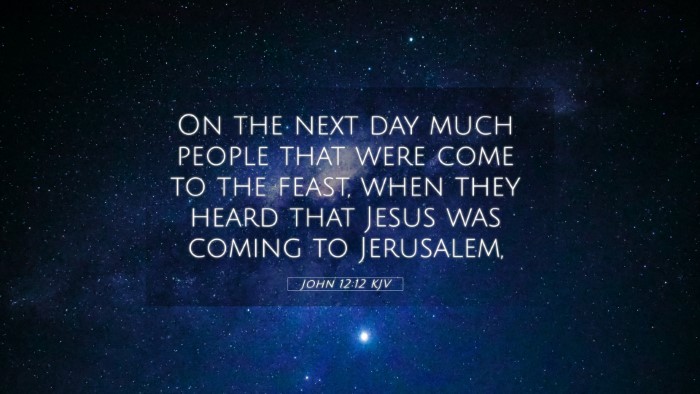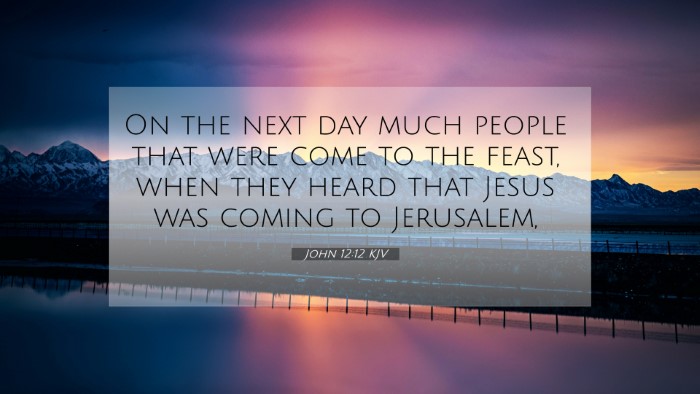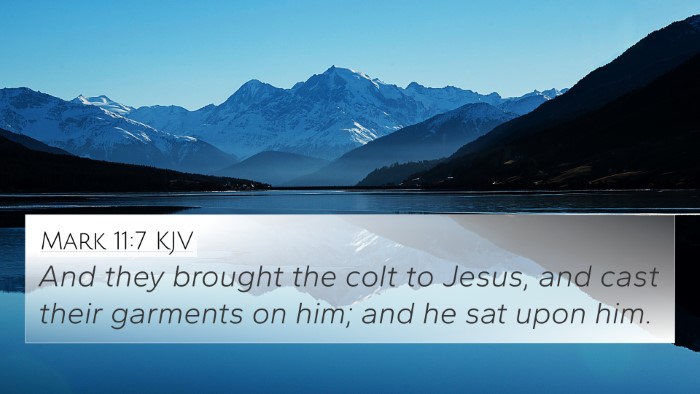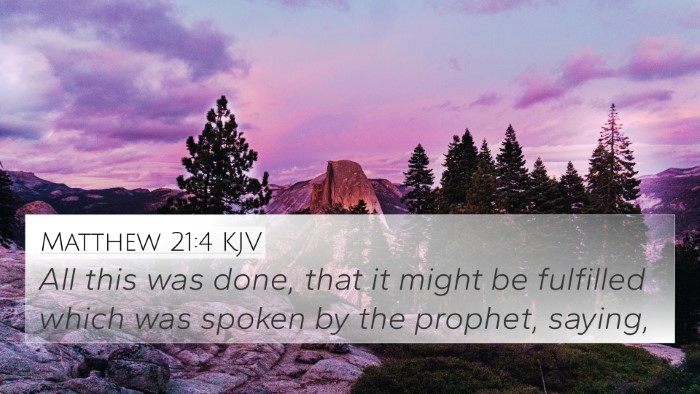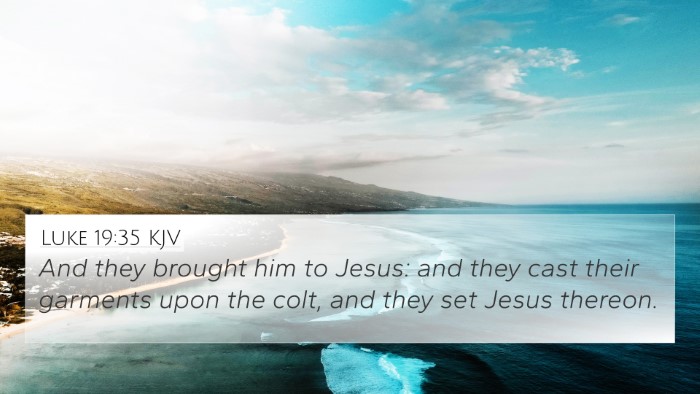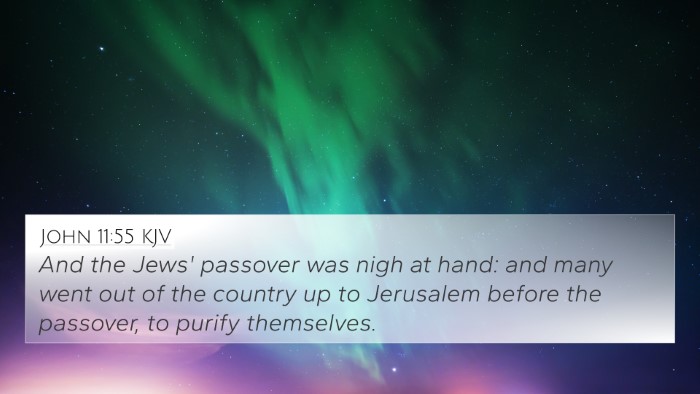Understanding John 12:12
Bible Verse: John 12:12 - “On the next day much people that were come to the feast, when they heard that Jesus was coming to Jerusalem.”
Summary of Meaning
John 12:12 marks a pivotal moment as Jesus approaches Jerusalem, heralding the beginning of a significant event known as the Triumphal Entry. This momentous occasion, where "much people" gathered, is underscored by the anticipation of the Feast of Passover, suggesting not only a religious convergence but also a heightened awareness of Jesus' messianic identity.
Interpretation from Public Domain Commentaries
Matthew Henry’s Commentary
Henry emphasizes the fulfillment of prophecy during this event, linking it to Zechariah 9:9 which foretells the coming of a humble king. The gathering of people signifies the magnified expectation surrounding Jesus and illustrates how the prophetic narrative is unfolding within the context of celebrations and expectations of deliverance.
Albert Barnes’ Notes on the Bible
Barnes highlights the significance of the multitude's choices at this moment, noting that their actions reveal a mix of hope and desire for political salvation. The verse showcases the excitement toward Jesus as a prophet but also hints at the eventual disillusionment as the people face the realities of His passion. The public's movements foreshadow an intricate interaction between human expectations and divine purpose.
Adam Clarke’s Commentary
Clarke offers insights into the socio-religious context of the time. He notes that this multitude not only recognizes Jesus but believes He is the one who will lead them to a broader national restoration. The excitement surrounding the feast amplifies the crowd's emotions, establishing a stark contrast with the somber events that will soon follow. It serves as a moment of anticipation, as they lay palms and shout praises, indicating acclaim for Jesus as the coming ruler.
Bible Cross References
- Zechariah 9:9 - Prophecy of the coming king riding on a donkey.
- Matthew 21:1-11 - The account of the Triumphal Entry in the Gospel of Matthew.
- Mark 11:1-10 - Parallel account of Jesus' entry into Jerusalem.
- Luke 19:28-40 - Description of Jesus' approach to Jerusalem and the people’s praise.
- Revelation 7:9 - Vision of a great multitude praising God, echoing themes of worship.
- Psalms 118:26 - A declaration of blessings upon the one who comes in the name of the Lord.
- Isaiah 62:11 - A message of salvation heralded to people across nations.
Connections to Other Biblical Themes
This verse not only marks a key event but also connects deeply with themes of messianic fulfillment, public recognition, and human anticipation of divine intervention. Through Bible verse cross-references, we can significantly deepen our understanding of the context and implications of John 12:12.
Thematic Bible Verse Connections
Following the connections between these verses provides insights into the nature of faith and expectation, along with the ultimate reality of Jesus’ mission. For instance:
- Faith and Expectation: The expectation of the crowd highlights the theme of faith, encouraging believers to understand what it is to expect from God.
- Recognition and Rejection: The same people who hailed Jesus would later demand His crucifixion, paralleling the duality of human acceptance and rejection.
- Humility in Kingship: Jesus’ choice to enter on a donkey reflects God’s approach to leadership, contrasting worldly expectations.
Cross-Referencing Bible Texts
To enhance our analysis of John 12:12, we can apply cross-referencing Bible study methods. For example, we can observe how the Gospels provide different perspectives on the same event. Matthew, Mark, and Luke all describe this event, each adding unique details and theological implications.
Tools for Deepening Understanding
Utilizing a bible concordance or a bible cross-reference guide helps readers find additional verses and themes connected to John 12:12.
To further explore this theme, consider:
- How to find cross-references in the Bible, using systems such as thematic analysis or structured verse connections.
- Identifying connections between Old and New Testament teachings regarding prophecy and fulfillment.
- Links between the themes present in the Psalms and their embodiment in New Testament events.
Conclusion
John 12:12 invites readers to reflect on the momentousness of Jesus' entry into Jerusalem, beckoning us to understand the broader narrative of expectation, fulfillment, and ultimately, redemption. By engaging with comparative Bible verse analysis and utilizing various bible reference resources, one can appreciate the richness and complexity of this significant event in the life of Christ.
